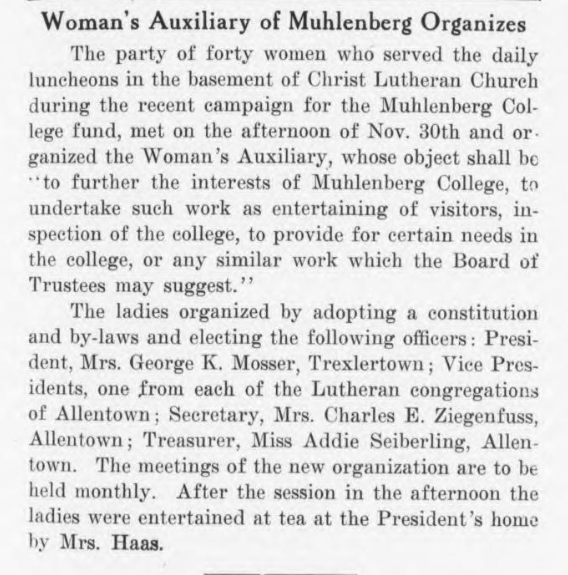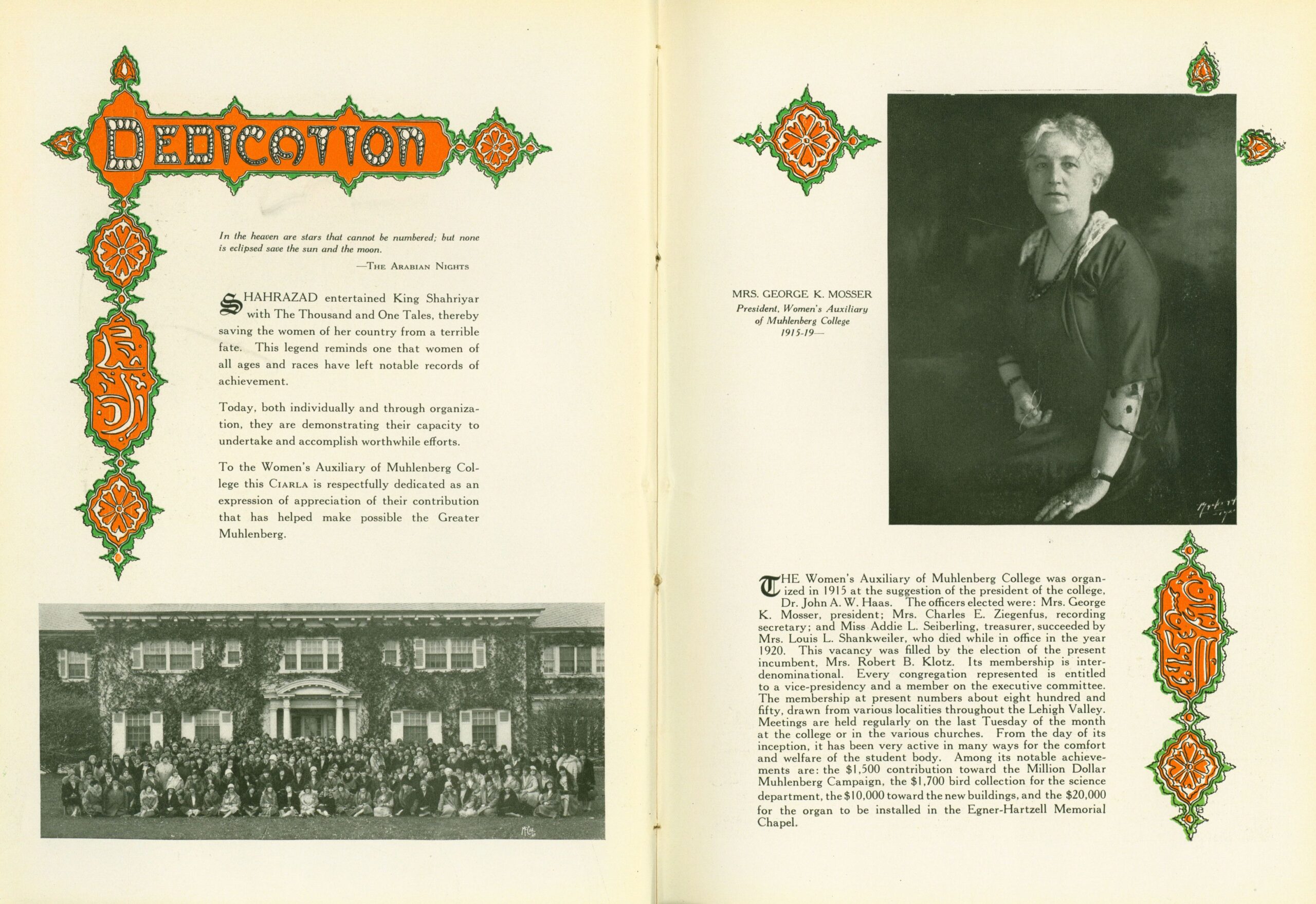The Muhlenberg Memories Project
The Women’s Auxiliary
In 2015, Muhlenberg College’s Women’s Auxiliary celebrated their 100th anniversary, a testament to the enormous contributions the women made that were indispensable to the survival of the institution. Looking back, these entrepreneurial women, comprising the wives of both faculty and alumni and non-affiliated women from Allentown, started the Auxiliary with 40 members banding together. On November 30, 1914 they created their governance and mission statement for the organization. As reported in the Muhlenberg Weekly, their objective was “to further the interests of Muhlenberg College, to undertake such work as entertaining of visitors, inspection of the college, to provide for certain needs in the college, or any similar work which the Board of Trustees may suggest” (December 8, 1915).
The Auxiliary significantly supported Muhlenberg financially, as well as contributed in many other ways, including lending sewing skills to mend athletic uniforms and dining linens, providing baked goods and refreshments in the student union before there were regular dining facilities, and even repairing dormitory furniture.
The Auxiliary was well respected for its dedication and service to Muhlenberg and attracted many participants. By 1931, the membership had grown to 600 women. Their donations for furnishings for dormitories, funding for the Egner Chapel pipe organ and numerous luncheons and lectures became legendary. In gratitude, the student body dedicated their yearbook, the Ciarla, to the Ladies Auxiliary with a special acknowledgement of the generosity and dedication of their president, Mrs. George K. Mosser.
The Auxiliary also proved itself indispensable during the 1940s when the College was home to the World War II Navy training program, volunteering its time to serve men in the chow hall, to send Christmas packages to students overseas, and to provide moral support and services to students who remained on campus.
Over the decades, the Auxiliary has made countless donations to the College, many of which occurred during times of financial hardship and were of very generous sums, no doubt contributing to Muhlenberg’s survival. Since its first recorded gift of a dozen napkins totaling $8.46, the Auxiliary has made such generous contributions as funds for the Field House, Memorial Hall Lounge, and Seegers Union; a $1,700 bird collection (the foundation for today’s research museum at the Acopian Center for Ornithology); the $20,000 pipe organ in Egner Chapel; and, in 1941,the campus improvement of painting the doors of the chapel and other buildings red, thus beginning a long and cherished tradition.
In 1948, thirty-three years after its founding, the organization was recorded as having “a life membership of seventy-six women, with an average monthly attendance exceeding two-hundred and fifty active members.” While many of these women, including parents of students, staff, and faculty wives, did have affiliations to Muhlenberg and wanted to give back, many more members of the Auxiliary had no official affiliation and still remained loyal and dedicated to furthering the cause of the institution through countless acts of service. The contributions that the Women’s Auxiliary have made to Muhlenberg left a lasting impression on the College’s history, not only for the administrators, but also for every student, past, present, and future. In fact, the Auxiliary’s fundraising and their generosity for the greater good of Muhlenberg is evident across campus from the Center for Arts; the bridge joining the Shankweiler Biology Building and the Trumbower Science Building; Seegers Union; Trexler Library; and Egner Chapel.






